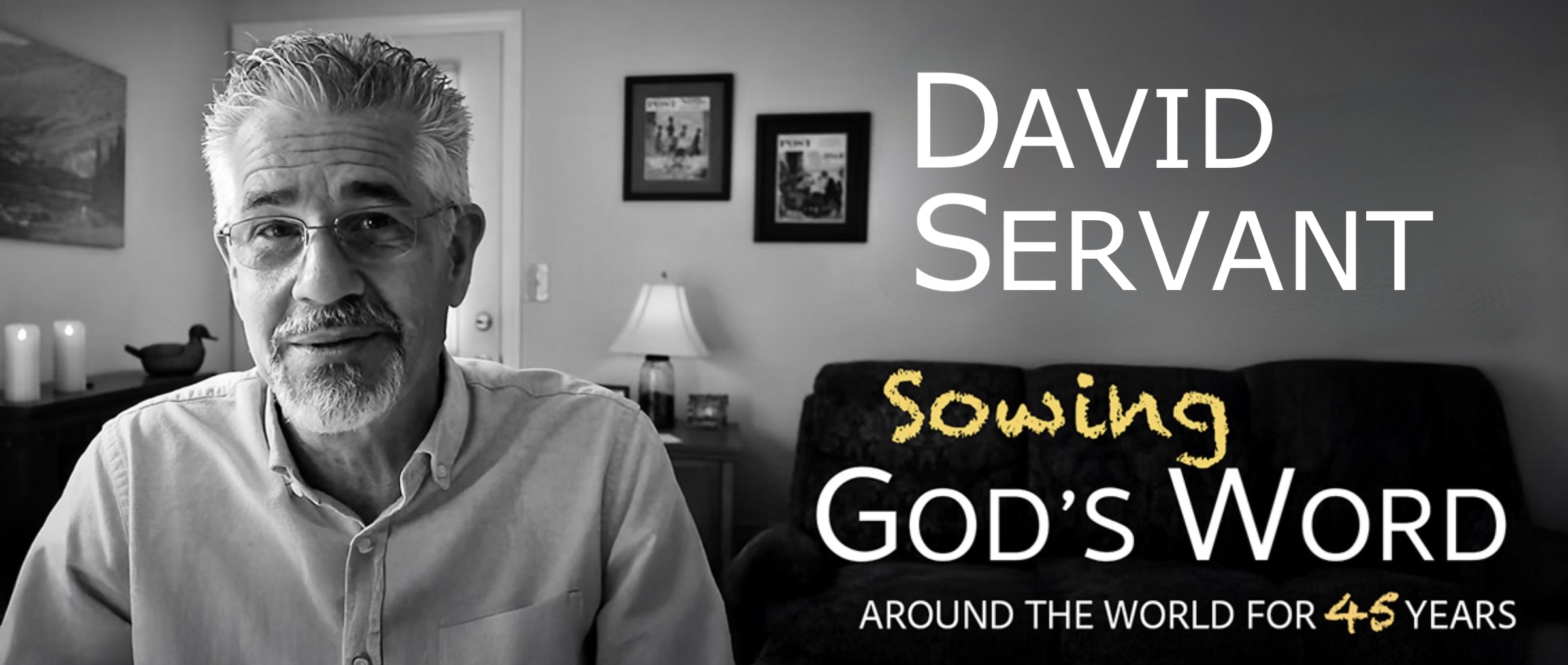

Luke tells us that, after His crucifixion, Jesus appeared to His disciples from time to time over a period of forty days, talking to them about the Kingdom of God (see Acts 1:3). Soon after His second appearance, Jesus’ disciples left Jerusalem at His orders and went back to the region of Galilee (see Matthew 26:32; 28:7,10; 28:16).
Three years earlier, Peter, Andrew, James and John had left their fishing nets on the shore of the Sea of Galilee to follow the man who did miracles. Now, back in Galilee, Peter decided to go fishing again, and six of Jesus’ disciples joined him.
After fishing all night and catching nothing, at dawn, Jesus appeared on the shore. The disciples didn’t recognize Him, either because He was too far away, or because God supernaturally prevented them from recognizing Him, just as He had done with the two disciples on the road to Emmaus. However, once they followed His simple instructions and succeeded in catching an amazing quantity of fish, they realized who He was.
Peter may well have had a flashback of his other miraculous catch of fish three years earlier when he first encountered Jesus. This new catch was perhaps a sign that was intended to assure him of Jesus’ love, regardless of the condemnation he still felt in his heart for denying his Lord.
Remember that Peter had previously boasted that even if all the other disciples deserted Jesus, he would not, even claiming his willingness to go to prison and die if need be (see Matthew 26: 33-35; Luke 22:33). It was a claim that he loved the Lord more than the others. But his actions proved that his love wasn’t nearly as devoted as he’d thought.
Apparently during the other times that Jesus had appeared when Peter was present, the issue of what Peter had done had not been raised. Peter hadn’t confessed his sin, and Jesus hadn’t mentioned it either, waiting for the appropriate time. He wanted to be alone with Peter so as not to humiliate him. And He first wanted Peter to be assured that His love was unchanged. Peter had to be confronted, but Jesus didn’t want the confrontation to crush him. Peter already felt condemned in his heart for what he’d done. He probably wondered if his relationship with Jesus could ever be the same. Would the Lord ever trust him again, or use him in the ministry? The very fact that he had decided to go fishing may have been an indication that he was considering returning to his old vocation, thinking he had disqualified himself for the Lord’s service.
So after a breakfast of fish and bread that Jesus prepared and served, again demonstrating His undying love for the disciples who deserted Him, Jesus privately asked Peter a question, to which He, of course, already knew the answer. “Do you love me more than these?” (John 21:15). What were the “these” Jesus was referring to? Probably the other disciples. Jesus was asking, “Do you still claim to love Me more than they do?”
Peter’s response, “Yes, Lord, you know I love you” (John 21:15), is better understood if we know something about the original Greek language in which he and Jesus conversed. The word Jesus used that is translated “love” is the word agapeo, which is a deep, self-sacrificing love. Peter responded by using the Greek word phileo, which is a lesser love of friendship. Jesus asked Peter, “Do you still believe that you love Me with a love that is more self-sacrificing than the other disciples?”
A few days earlier, Peter would have responded with a proud, “Yes!” But now he realized that Jesus knew him better than he knew himself. With a sigh of acknowledgement, he replied, “Yes, Lord, You know the truth. I’ve proven that my love for You doesn’t go beyond the love of friendship.” Peter had confessed his pride.
But Jesus didn’t condemn Peter as Peter was condemning himself. He knew Peter loved Him more than what Peter now thought. He’d left everything behind to follow Jesus and had repeatedly obeyed Him for three years. Wanting Peter to know that He still believed in him and still had a plan to use him, Jesus replied, “Then feed my lambs” (John 21:15). Jesus was saying, “It isn’t My plan for you to be a fisherman for the rest of your life, because I’ve called you to serve Me.”
Jesus then asked Peter another question: “Simon, son of John, do you love me?” (John 21:16). He again used the word agapeo, but didn’t add the “more than these.” This question and its related commandment are perhaps an indication that Peter had indeed decided to quit the ministry. Jesus wanted Peter to realize that he couldn’t do that, regardless of whether his love was the agape or phileo kind. Peter’s answer was, again, self-condemning: “Yes, Lord, You know that I obviously only possess a phileo love for You.” But Jesus believed Peter’s love was greater than that, and He wanted Peter to believe it too, and so He commanded him, “Take care of my sheep” (John 21:16). Jesus was saying, “Your evaluation of yourself doesn’t matter; only Mine does. I believe in you, and to prove it, I’m entrusting My very own sheep to your care.”
Finally, Jesus again asked Peter if he loved Him, but this third time, Jesus used the word phileo. Jesus, of course, didn’t now doubt that Peter possessed a phileo kind of love for Him. Rather, He was trying to help Peter understand himself. It grieved Peter that Jesus had questioned his phileo for Him, and he objected to the question. “Lord, You know everything,” he replied. “You know I phileo You,” defending and yet still condemning himself. The hurt Peter felt at the question would help him to see that he did possess a heart-felt devotion for Jesus. And again, Jesus wanted him to realize that He knew Peter better than Peter knew himself. Jesus’ evaluation is all that matters, and His faith in Peter was unchanging. “Feed my sheep,” Jesus commanded him.
Concluding their conversation, Jesus, the One who knew that Peter would deny Him three times, the One who knew Peter better than he knew himself, also knew how Peter would die. And in his death, Peter would prove his agape love for his Lord. So Jesus told him how he would glorify God by martyrdom, conveying to Peter that his past failure had no bearing on his future.
In the process of a few days, Peter had gone from overestimating his love to underestimating it. Just as Peter’s appraisal of himself a few days before had been wrong and Jesus’ appraisal had proved to be true, now, again, Peter’s appraisal was wrong, and Jesus’ would prove true. Peter’s pendulum of perception had swung from pride to self-condemnation, but Jesus realigned it.
Q. Jesus gave Peter three commandments in today’s reading: 1) Feed my lambs, 2) Take care of my sheep, and 3) Feed my sheep. What do you think He meant?
A. Lambs and sheep represent those who believe in Jesus, some spiritual babies and some more mature in their faith. Feeding them is symbolic of teaching them the Word of God, and taking care of them represents a concern for their wellbeing, spiritually and in every other way. Jesus needs those in His body who will do just that, and He calls certain individuals for that purpose.
Q. Because of what Jesus said to Peter about John, many thought that John wouldn’t ever die. Why did they misunderstand?
A. Because they added to what Jesus actually said, making an assumption. We should be careful that we don’t make the same mistake, as Christians are often known to do.
 Application: Jesus believed the best about Peter in spite of his failures. And He lifted Peter out of condemnation, showing him mercy and giving him hope for the future. Jesus also knew the sins and mistakes you would commit before you committed them, but He still loves you. And He doesn’t want our failures to be stumbling blocks. Rather, He wants them to be stepping-stones. The answer to all our problems is gaining Jesus’ perspective.
Application: Jesus believed the best about Peter in spite of his failures. And He lifted Peter out of condemnation, showing him mercy and giving him hope for the future. Jesus also knew the sins and mistakes you would commit before you committed them, but He still loves you. And He doesn’t want our failures to be stumbling blocks. Rather, He wants them to be stepping-stones. The answer to all our problems is gaining Jesus’ perspective.
![]() Application: Once we realize and believe, just as John the Baptist did, that Jesus is the Son of God, we need to tell other people, especially those who are searching for the truth.
Application: Once we realize and believe, just as John the Baptist did, that Jesus is the Son of God, we need to tell other people, especially those who are searching for the truth. 











